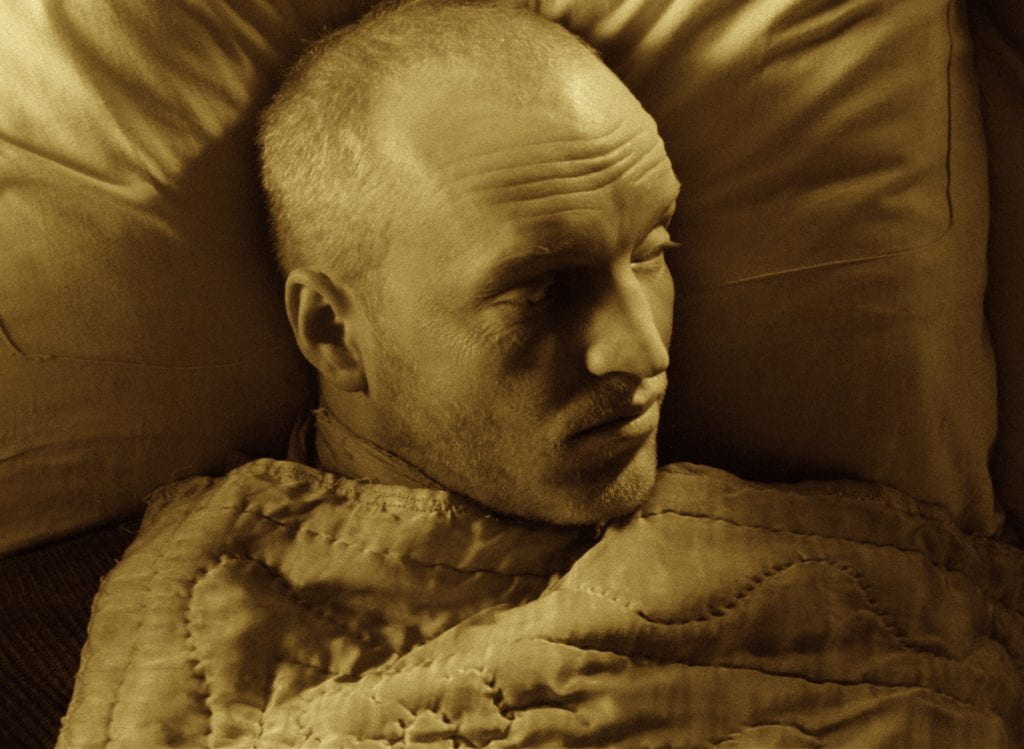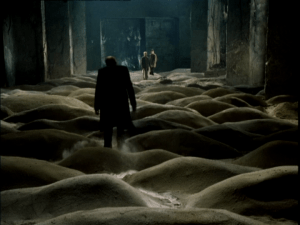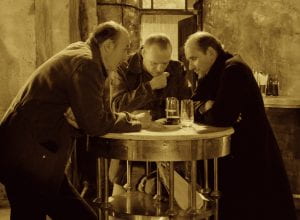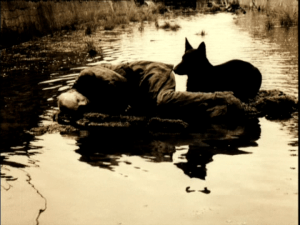
Guest post by Caleb Allison.
In Andrei Tarkovsky’s poetic monograph Sculpting in Time: Reflections on the Cinema, he comments on the perpetual need for viewers to understand what the Zone in Stalker (1979) symbolizes. I believe part of the film’s power lies in its symbolic and visual ambiguity. There are no definitive answers given – part of me wishes there were – but a wiser part knows it’s more important not to have them. Tarkovsky pleads, “People have often asked me what the Zone is, and what it symbolizes, and have put forward wild conjectures on the subject. I’m reduced to a state of fury and despair by such questions. The Zone doesn’t symbolise anything, any more than anything else does in my films: the zone is a zone, it’s life…” Well, out of respect for Tarkovsky’s fury and despair this article will not plumb the continually plumbable symbolic depths of Stalker. For that waterlogged journey please catch up with Geoff Dyer’s entertainingly divergent book about the film, Zona: A Book about a Film about a Journey to a Room.
However, I do want to write about my experience with the film’s recent 2K restoration by Mosfilm Studios from the 35mm original camera negative, especially with Tarkovsky’s final film, The Sacrifice (1986), planned for screening at the IU Cinema on January 29. The Sacrifice also boasts a new 4K restoration. Attending the IU Cinema for any film is a real treat, but for me the opportunity to see Stalker was an unmissable event. I’ve realized over time that one shouldn’t plow through Tarkovsky films like any Netflix-of-the-week TV series; they are not necessarily easy films to watch. My strategy approaching Tarkovsky, sorely realized after watching Ivan’s Childhood, Solaris, and Stalker at home, is to wait patiently (or search frantically) for a screening nearby so they may be savored in their natural habitat. Once you’ve ripped through the Tarkovsky oeuvre, that’s it… there is no more Tarkovsky. Slow and steady (and in cinema) wins the Tarkovsky race, my friends.
Stalker’s new 2K restoration is magnificent, and I can’t believe I’m saying this, but for me, maybe a little too magnificent. Before my true Tarkovsky baptism at the IU Cinema I cherished (and still do) my 2006 Kino International special, two-disc set like a baby blanket. One that’s acquired a certain patina and aroma from miles of mindless dragging across filthy streets, grocery store tile, and cheap, endless department store carpet. I refused to let anyone wash it, because then it would lose part of what made it my blanket. At a certain point, you start to love the tears, the stains, the smells, because they all have their own stories.
Watching the 2K restoration at the IU Cinema wasn’t just like getting my blanket washed against my will and given back to me sparkling, with all its tears and stains erased, it was like getting a brand new blanky! I was stricken with the spit-shined clarity of the image, especially the film’s beautifully toned sepia bookends, vibrant, yet rare, splashes of color, and altogether new sounds I’m sure I’ve never heard the Zone make before. And yet, I came away with a nagging feeling of loss at how my relatively dark and grimy Kino version had been spruced up beyond recognition. I have a very small but persistent hankering that Tarkovsky would have preferred the grimier Kino version, if only because it exposed the film’s cryptic environments and symbols to greater ambivalence and speculation.
Tarkovsky writes, again in Sculpting in Time, “When less than everything has been said about a subject, you can still think on further. The alternative is for the audience to be presented with a final deduction, for no effort on their part, and that is not what they need.” I feel no guilt extending this comment beyond what has merely been said to what has been seen. As you can see in the frame comparisons, the once near-monochrome bookends of the film are now sepia-toned, the black silhouette of a dog is now an actual dog – with fur and everything, and all those dark corners are revealed to have an abundance of hidden details masked by the Kino edition’s high contrast, which cloaks many a mysterious corner throughout the film.
Tarkovsky’s prevalence for long takes allows viewers to search the frame without being rushed along to the next shot. He poetically defined this strategy as such: “If the regular length of a shot is increased, one becomes bored, but if you keep on making it longer, it piques your interest, and if you make it even longer, a new quality emerges, a special intensity of attention.” With Stalker we are given time to explore, to wonder, and to contemplate, and my Kino version offered more darkened spaces to squint at and pay attention to. While there is an undeniable delight in finally getting to peek behind the curtains of the Zone, I’m hesitant to claim that the 2K restoration benefits Tarkovsky’s overall aesthetic strategy in Stalker.
Now, that being said, please don’t take me for some anti-restoration Luddite. Film restoration is an invaluable process for preserving film history and culture, and digital restoration offers miraculous tools for revealing the true spirit of many neglected and abused film treasures. Stalker’s restoration is truly a revelation, offering new details to scrutinize, explore, and pay attention to. But it also brings to light some of the darkest corners of the Zone, and whether or not Tarkovsky meant for them to be seen, they offer us a little more clarity in a world built on obscurity. Now you have to ask yourself: Do you enter the Room and expose your innermost desires to the light, the truth, the crisp details, or do you embrace the shadowed corners and speculate further about their damp, tortuous possibilities?
Stalker previously screened at the IU Cinema in 2013 and in 2017 in conjunction with the International Arthouse Series. Another Tarkovsky film, Andrei Rublev, screened in 2014.
The Sacrifice will be shown on January 29 as part of the International Arthouse Series and the series Representing Religion: Ireland, The Troubles, and Beyond, which is sponsored by The Media School, the Department of Religious Studies, the School of Global and International Studies, and the IU Cinema.

Caleb Allison usually prefers his films slow, cryptic or menacing and doesn’t always understand why. A master’s student at Indiana University, Caleb studies home-video cultures, film history, and production and distribution industries. He is an unrestrained collector of The Criterion Collection, film cameras and projectors, and sometimes believes he was unjustly born in the wrong era.





